| Date | Text | |
|---|---|---|
30 Nov 1923
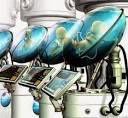
ectogenesis |
ectogenesis (biology) The term "ectogenesis" is coined by British scientist J.B.S. Haldane to describe the growth of mammalian embryos in artificial environments. |
|
30 Nov 1923
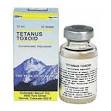
tetanus toxoid |
tetanus toxoid (biochemistry) The first inactive tetanus toxoid is discovered and produced. |
|
30 Nov 1923

David Hilbert |
David Hilbert (mathematics) David Hilbert proposes Hilbert's paradox of the Grand Hotel. |
|
30 Nov 1923

S. N. Bose |
S. N. Bose (physics) S. N. Bose and Albert Einstein publish papers in Zeitschrift für Physik applying Bose–Einstein statistics to light quanta and to atomic models and predicting existence of the Bose–Einstein condensate. |
|
30 Nov 1923

E. C. Stoner |
E. C. Stoner (physics) E. C. Stoner publishes a paper pointing out that for a given value of the principal quantum number (n), the number of energy levels of a single electron in the alkali metal spectra in an external magnetic field, where all degenerate energy levels are separated, is equal to the number of electrons in the closed shell of the rare gases for the same value of n. This leads to discovery of the Pauli exclusion principle. |
|
30 Nov 1923

Louis de Broglie |
Louis de Broglie (physics) Louis de Broglie introduces the wave-model of atomic structure, based on the ideas of wave-particle duality. |
|
30 Nov 1923

Václav Holek |
Václav Holek (technology) Václav Holek designs the ZB vz. 26 light machine gun for Zbrojovka Brno. |
|
23 Jan 1924

Sir James Lighthill |
birth Sir James Lighthill Born 23 Jan 1924; died 17 Jul 1998 at age 74. Sir Michael James Lighthill was a British mathematician who contributed to supersonic aerofoil theory and, aeroacoustics which became relevant in the design of the Concorde supersonic jet, and reduction of jet engine noise. Lighthill's eighth power law which states that the acoustic power radiated by a jet is proportional to the eighth power of the jet speed. His work in nonlinear acoutics found application in the lithotripsy machine used to break up kidney stones, the study of flood waves in rivers and road traffic flow. Lighthill also introduced the field of mathematical biofluiddynamics. Lighthill followed Paul Dirac as Lucasian professor of Mathematics (1969) and was succeeded by Stephen Hawking (1989). |
|
01 Feb 1924

John Logie Baird |
John Logie Baird (technology) John Logie Baird sends rudimentary television pictures over a short distance. |
|
05 Feb 1924
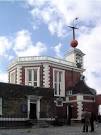
Royal Greenwich Observatory |
Royal Greenwich Observatory (technology) Hourly time signals from Royal Greenwich Observatory are broadcast for the first time. |
|
11 Feb 1924
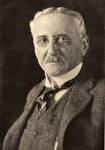
Jacques Loeb |
death Jacques Loeb Jacques Loeb, German-born physiologist (born 1859) |
|
23 Feb 1924

Allan MacLeod Cormack |
birth Allan MacLeod Cormack Born 23 Feb 1924; died 7 May 1998 at age 74. South African-born American physicist who formulated the mathematical algorithms that made possible the development of a powerful new diagnostic technique, the cross-sectional X-ray imaging process known as computerized axial tomography (CAT) scanning. He first described this in two papers in 1963 and 1964. X-ray tomography is a process by which a picture of an imaginary slice through an object (or the human body) is built up from information from detectors rotating around the body. For this work, he was awarded a share (with Sir Gregory Hounsfield) of the 1979 Nobel Prize. Cormack was unusual in the field of Nobel laureates because he never earned a doctorate degree in medicine or any other field of science. |
|
27 Feb 1924

Shaply reply to Hubble on Andromeda distance |
Shaply reply to Hubble on Andromeda distance In 1924, Harlow Shapley wrote back in reply to the letter from Edwin Hubble which presented the measurement of 300,00 parsecs as the distance to the Andromeda nebula. That was the first proof that the nebula was far outside the Milky, in fact, a separate galaxy. When Shapley had debated Heber Curtis on 26 Apr 1920, he presented his firm, life-long conviction that all the Milky Way represented the known universe (and, for instance, the Andromeda nebula was part of the Milky Way.) On receipt of the letter, Shapley told Payne-Gaposchkin and said “Here is the letter that has destroyed my universe.” In his reply, Shapley said sarcastically that Hubble's letter was “the most entertaining piece of literature I have seen for a long time.” Hubble sent more data in a paper to the AAS meeting, read on 1 Jan 1925. |
|
14 Mar 1924
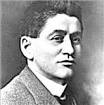
John M. Mack |
death John M. Mack Died 14 Mar 1924 at age 59 (born 27 Oct 1864). John M. “Jack” Mack was an American inventor and manufacturer who co-founded the Mack Brothers Company (1902), which became Mack Trucks Inc. (1922), manufacturers of tough heavy-duty trucks. In 1890, he began working for a business making carriages and wagons in New York City, which he subsequently bought (1893) and ran with his brothers. By 1900, the Mack brothers produced their first successful large vehicle, a 40-hp 20-passenger sight-seeing bus, called the Manhattan. They built more buses, and by 1905, they expanded into making trucks, with about 100 workers. In 1910, Mack produced the first motorized hook-and-ladder fire truck. John invented the Mack “Bulldog” type engine. The bulldog remains the present company's icon and part of its logo. He left the company in 1912 to start another manufacturing business. He died in a car accident. |
|
22 Mar 1924
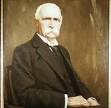
William Macewen |
death William Macewen Sir William Macewen, Scottish surgeon (born 1848) |
|
23 Mar 1924

Bjørn G. Andersen |
birth Bjørn G. Andersen Bjørn G. Andersen, Norwegian quaternary geologist and glaciologist (early environmental studies) (died 2012) |
|
04 Apr 1924
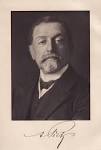
Arnold Pick |
death Arnold Pick Arnold Pick, Czech neurologist (born 1851) |
|
12 Apr 1924

Peter Safar |
birth Peter Safar Born 12 Apr 1924; died 3 Aug 2003 at age 79. Austrian-American physician whose pioneering "Kiss of Life" procedure of mouth-to-mouth resuscitations is credited with saving countless lives. In the 1960s the technique was combined with new chest compressions, producing what's known today as CPR, or cardio-pulmonary resuscitation. He also helped create the organization that, in 1976, became the World Association for disaster and Emergency Medicine. Although there are ancient references to the apparent use of mouth-to-mouth resuscitation in the Bible, the technique fell out of practice until rediscovered by Safar in the 1950s. Also credited with playing a key role was his colleague, Dr James Elam. Safar survived a Nazi labor camp before emigrating to the U.S. after WW II. |
|
24 Apr 1924
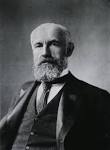
G. Stanley Hall |
death G. Stanley Hall G. Stanley Hall, American psychologist (born 1844) |
|
10 Jun 1924
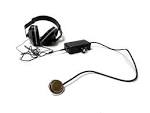
Electrical stethoscope |
Electrical stethoscope In 1924, the first U.S. portable electrical stethoscope was demonstrated in Chicago, Ill. to amplify the sounds of the human body. It was designed by the Western Electric Co. with Bell System engineers and physiologist Dr. Horatio B. Williams. It was subsequently maketed in Oct 1925. |
|
24 Jun 1924

James W. Black |
birth James W. Black James W. Black, Scottish pharmacologist (Nobel Prize in Physiology or Medicine, 1988) (died 2010) |
|
25 Jun 1924

T.B. vaccine |
T.B. vaccine In 1924, tuberculosis vaccine was developed by Prof Albert Calmette and Alphonse Guerin. |
|
13 Jul 1924
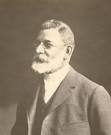
Robert Kidston |
death Robert Kidston Died 13 Jul 1924 at age 72 (born 29 Jun 1852). English paleobotanist who contributed greatly to our knowledge of Devonian plants He is noted for his discoveries and descriptions of plant fossils from the Devonian period (408 to 360 million years ago). An outstanding and respected scholar, he cataloged Paleozoic plants for many world-class institutions, including the British Museum. His work included excavating at Rhynie, Aberdeenshire, Scotland (from 1917) in the most famous plant fossil assemblage representing an early terrestrial ecosystem, preserved in the so-called Rhynie chert of early Devonian age. The chert is a silicified matrix of a swampy peat bed that contains plant remains and other organisms such as arthropods and fungi as a fossilized subterranean ecosystem. |
|
13 Jul 1924
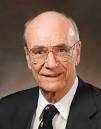
Donald E. Osterbrock |
birth Donald E. Osterbrock Born 13 Jul 1924; died 11 Jan 2007 at age 82. Donald Edward Osterbrock was an American astronomer who was a leading authority on the history of astronomy, and director of the University of California's Lick Observatory. He applied physics to produce accurate models of stars. For example, treating the outer part of the sun as turbulent and convective, he explained the seemingly anomalous fact that the sun's corona is hotter than its surface. He investigated the nature of ionized gas around hot stars, and was a pioneer in the use of spectroscopic methods for the study of gaseous nebulae. He discovered new types of active galactic nuclei, which are powered by black holes in the centers of galaxies. He fostered the construction of the 10-meter Keck Telescopes in Hawaii. |
|
24 Sep 1924

Alexandre Lacassagne |
death Alexandre Lacassagne Alexandre Lacassagne, French forensic scientist (born 1843) |
|
09 Nov 1924

Don Beaven |
birth Don Beaven Don Beaven, New Zealand medical researcher in the area of diabetes treatment and prevention (died 2009). |
|
20 Nov 1924
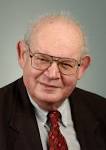
Benoît Mandelbrot |
birth Benoît Mandelbrot Benoît Mandelbrot, Polish-born French American mathematician, originator of fractal geometry (died 2010) |
|
23 Nov 1924
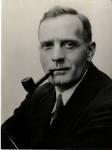
Edwin Hubble |
Edwin Hubble (astronomy and space ) Edwin Hubble announces his discovery that Andromeda, previously believed to be a nebula, is actually another galaxy, and that the Milky Way is only one of many such galaxies in the universe. |
|
30 Nov 1924

Transatlantic radio photo fax |
Transatlantic radio photo fax In 1924, the first photographs sent by radio across the Atlantic as a public demonstration were received in New York. and published next day in the New York Herald Tribune. Pictures of officials were accompanied by a photo of the Oxford team winning in a relay race at Cambridge, a steamship aground on the banks of the Thames, and an image of the written proverb, "One picture is worth a thousand words." (A relay was made on 6 Jul 1924 when a picture of Charles E Hughes, Secretary of State, was transmitted on a circuit beginning at the RCA Laboratories, by wire to New Brunswick, N.J., then radio to Brentwood, England and wire to London. By further wire and radio links, the signal was recorded back at the origin.) |
|
08 Dec 1924
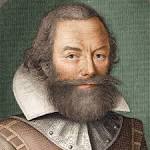
John Smith |
birth John Smith Born 8 Dec 1924; died 22 Nov 2003 at age 78. English microbiologist who was a pioneer in the field of nucleic acid research. He helped to establish the structure of RNA and to discover the methylation of the bases in bacterial DNA. The RNA structure information was crucial to the double-stranded model of DNA proposed by Watson and Crick. He contributed to the methodology involved in the unravelling of the secrets of the genome. In the early 1960s, Smith became involved in unravelling the process whereby the sequence of bases in DNA determines the assembly of the different amino acid sequences of proteins which are responsible for all our bodily functions (structural, enzymatic, hormonal, and so on), a process known as protein synthesis. |
|
22 Dec 1924
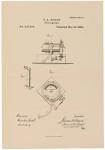
Edison patent |
Edison patent In 1924, Thomas A. Edison was issued a U.S. design patent for a "Design for a Phonograph Cabinet." (Design patent No. 69068). In addition to a front and side elevation, the patent showed an enlarged portion of the front elevation showing more clearly the details of one of the panels or grilles. The design patent covers the ornamental design for a phonograph cabinet as shown for a term of 14 years. A design patent protects only the appearance of the article and not structural or utilitarian features. |
|
30 Dec 1924
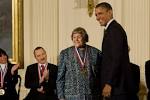
Yvonne Brill |
birth Yvonne Brill Yvonne Brill, Canadian scientist best known for her work developing rocket and jet propulsion technologies (died 2013) |